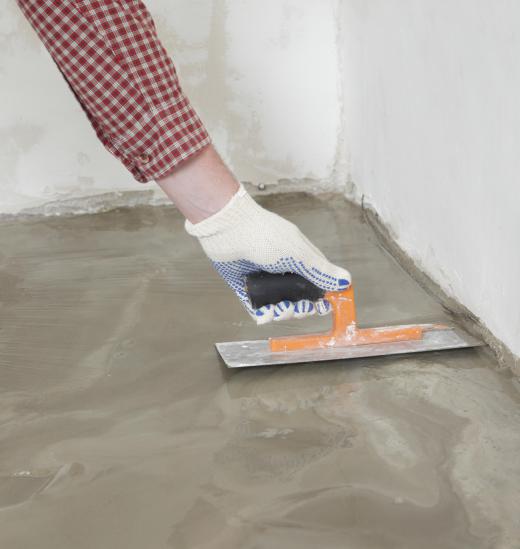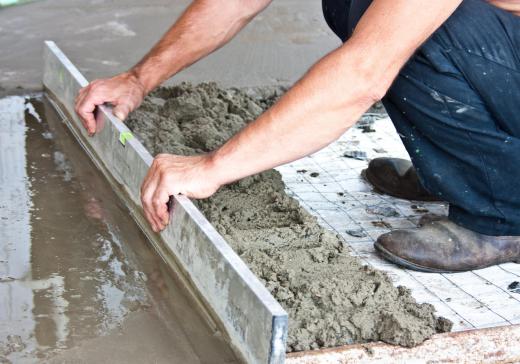Insulated concrete forms (ICF) are a type of building material used to construct concrete walls, floors, and foundations. They are made from foam insulation, and act as a form for the concrete as it is poured. As the concrete cures, the ICF are left in place and become a permanent part of the structure. ICF are available in either panel or block form. The panels can be cut to size and connected with plastic ties, while ICF blocks stack together much like traditional masonry units.
One of the most popular uses for ICF is the construction of underground concrete units, including basement walls and floors, and well as building footings and foundations. More complex versions of ICF panels and blocks are used above-ground, and are specially designed to support the load of the building. Units used above-ground generally include integral furring strips to allow for easily installation of drywall and exterior cladding.

Walls and floors constructed with ICF offer a number of advantages over traditional concrete structures. First, they are heavily insulated, and provide superior levels of thermal resistance. This means that cold air from underground cannot penetrate the concrete and enter the home. This helps keep the home comfortable, while reducing heating and cooling costs. The resulting reduction in energy use helps to protect the environment by reducing carbon dioxide emissions.

The ability of a material to prevent thermal transfer is measured by the product's R-value, with higher R-values associated with low levels of thermal transfer. While uninsulated concrete was an R-value, or thermal resistance level of less than 1, ICF can help the concrete achieve an R-value of 17 to 20. This is about four to five times the insulation level of rigid foam, and six to seven times the level of insulation offered by fiberglass batts. ICF also offer high levels of fire and insect resistance, and help to block the transmission of exterior noises into the home.
When it comes to upfront costs, ICF are generally more expensive than alternative materials, especially when used above ground. Some of the upfront costs of these forms may be offset by reduced energy costs, especially in areas exposed to extremely cold temperatures. Builders planning to use ICF should be aware of the reduced flexibility associated with these forms. Once walls are built, it is difficult to change the location of door and window openings, and may require advanced tools and equipment.
